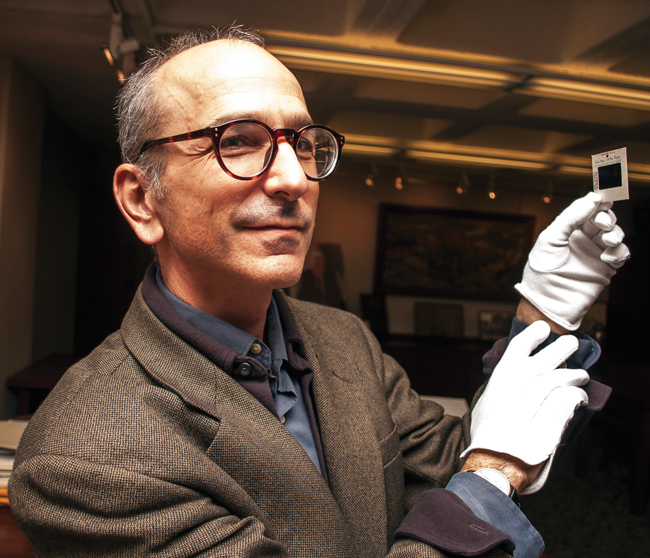BY ADAM KENT-ISAAC
It began with a routine assignment, says IU history professor Eric Sandweiss, to write for the IU Libraries website describing their collection of 14,000 photographs taken by Charles Cushman. But during his research, he “realized that the person taking the pictures was just as important, mysterious, and intriguing as his subjects,” he says.
Thus was born The Day in Its Color (Oxford University Press), Sandweiss’ 233-page hardcover volume chronicling Cushman’s journey across America and his vivid Kodachrome photography.
A successful businessman and IU alumnus, born in Poseyville, Indiana, Cushman began traveling in 1938 with his wife, Jean, and his Contax rangefinder camera, snapping slides from Chicago to the Grand Canyon to San Francisco.
Though an amateur photographer, he had an eye for color and composition, using now-discontinued Kodachrome film—at the time a major innovation. His prolific work, bequeathed to his alma mater before his death in 1972, offers a window into an era that is typically seen without color.
For most people, Sandweiss says, “black and white is how we see the past. Although we know better, we think of the past as being gray, and our own lifetimes as being in color. Cushman, and everyone else working with color in the 1930s, turned that assumption on its head.”
The visuals are only half of the story. Meticulously researched, the details of Cushman’s life—including his relationship with his cousin, writer John Steinbeck; his business career; and his wife’s attempt to murder him and then commit suicide (they both survived)—are all in the book.
“As interesting as his life was, I don’t want to hold him up as a singular individual but more as an example of the richness with which ordinary people can capture their world,” says Sandweiss, noting that there are sure to be more Charles Cushmans, as “other boxes of slides in closets all over America” are discovered.
An exhibit of Cushman’s work at the Mathers Museum of World Cultures began in July and will run until December.
















